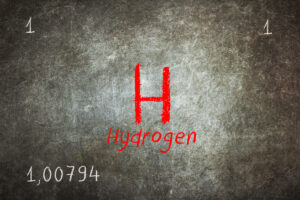Energy security continues to be a focus issue for politicians around the world. One can’t discuss energy, however, without also talking about the environment. Last December, the Wall Street Journal openly wondered whether the next few decades will see rising use of natural gas in the United States [“Has Natural Gas’s Moment Come?” by Ann Davis, Ben Casselman, and Rebecca Smith, 16 December 2010]. Davis et al. write:
“After a decade-long wild ride, North American natural-gas prices seem to be entering a period of stability, which is likely to change the way Americans heat their homes, generate their electricity and maybe even fuel their cars. Gas producers have been arguing for some time that new sources of the fuel have made it both plentiful and reliable. But residential and industrial consumers, from homeowners to power utilities, have been reluctant to increase their dependence on natural gas because of concerns about price volatility. This appears to be changing, thanks to a combination of factors. Huge new discoveries in the U.S. and Canada have greatly increased supplies, lowering prices. Big infrastructure build-outs in recent years have made it easier to move gas around to where it needed, helping ease regional price spikes. … Many now see gas as a versatile fuel that ought to be deployed more widely (gas generation provides about one-fifth of U.S. electricity and heat for about half of U.S. homes). Some advocates argue that long-haul trucks—and perhaps even cars—should be converted to use natural gas, as they are in Argentina.”
In a more recent article, however, the Journal indicates that one of the techniques used to get to the natural gas — hydraulic fracturing — is coming under increased scrutiny [“Drilling Tactic Unleashes a Trove Of Natural Gas—And a Backlash,” by Ben Casselman and Russell Gold, Wall Street Journal, 21 January 2010]. Casselman and Gold report:
“A mounting backlash against a technique used in natural-gas drilling is threatening to slow development of the huge gas fields that some hope will reduce U.S. dependence on foreign oil and polluting coal. The U.S. energy industry says there is enough untapped domestic natural gas to last a century—but getting to that gas requires injecting millions of gallons of water into the ground to crack open the dense rocks holding the deposits. The process, known as hydraulic fracturing, has turned gas deposits in shale formations into an energy bonanza. The industry’s success has triggered increasing debate over whether the drilling process could pollute freshwater supplies. Federal and state authorities are considering action that could regulate hydraulic fracturing, potentially making drilling less profitable and giving companies less reason to tap into this ample supply of natural gas.”
Casselman and Gold point out that the technique isn’t new. “Oilmen were injecting water into wells to free up valuable oil and gas as far back as the 1940s. But in the past decade the technique has really taken off.” They continue:
“Today, the industry estimates that 90% of all new gas wells are fractured. Shale—a dense, nonporous gas-bearing rock—won’t release its gas unless it is cracked open, and other types of formations also produce more gas when fractured. … As the industry has honed its techniques, hydraulic-fracturing operations have become more complex, requiring far more water and chemicals—millions of gallons per well, rather than tens or hundreds of thousands of gallons in the past.”
According to Casselman and Gold, “What most worries environmentalists isn’t the water in the fracturing process—it’s the chemicals mixed in the water to reduce friction, kill bacteria and prevent mineral buildup. The chemicals make up less than 1% of the overall solution, but some are hazardous in low concentrations.” Environmentalists are concerned that those chemicals will contaminate drinking water supplies and cause significant health challenges. The oil industry claims the procedure is safe. Nevertheless, environmentalists have persuaded “several states, including Colorado, Pennsylvania and New York” to either pass or consider tightening “regulations on fracturing and related activities.” Casselman and Gold provide some examples of problems created by hydraulic fracturing include the death of some cattle and an exploding water well. Natural gas providers, however, aren’t the only energy providers facing questions about water use and hydraulic fracturing.
Even alternative energy providers are facing questions about water supplies [“Alternative Energy Projects Stumble on a Need for Water,” by Todd Woody, New York Times, 30 September 2010]. Woody’s article begins with the tale of two solar powerplants being built in Nevada by a German company named Solar Millennium. Although Nevada has lots of sun, it has very little water. Woody reports that the preferred method for cooling the “power plants would consume 1.3 billion gallons of water a year, about 20 percent of … available water” in the area where the plants are being built. Woody continues:
“Here is an inconvenient truth about renewable energy: It can sometimes demand a huge amount of water. Many of the proposed solutions to the nation’s energy problems, from certain types of solar farms to biofuel refineries to cleaner coal plants, could consume billions of gallons of water every year.”
Woody reports that other western and southwestern states that have lots of sun but limited water are also concerned about the impact that alternative energy plants could have on their resources. In addition to water rights, there are also concerns about hydraulic fracturing used by some geothermal power plants [“Drilling Ordeals Said to Delay Geothermal Project,” by James Glanz, New York Times, 20 August 2009]. Glanz notes that a geothermal company named AltaRock Energy is building a plant in California and hopes to generate electricity to produce renewable energy “by fracturing rock at the bottom of a deep hole and then circulating water through the cracks to generate steam.” Concerns have been raised in this instance about whether the plan could trigger earthquakes. Glanz reports:
“After an article in The New York Times raised questions on whether AltaRock had been forthcoming about earthquakes generated by a similar project in Basel, Switzerland, the Energy Department and the Bureau of Land Management informed the company that it would not be allowed to fracture rock until the department completed a new review of whether the project would be safe.”
Glanz asserts that “the fracturing would be virtually guaranteed to induce earthquakes, which the company has said would be so small as to be nearly imperceptible but which local residents and some scientists fear could be larger.” Glanz indicates that the reason local residents are concerned is that “the project is in one of the world’s most seismically active areas.” The Basel incident to which Glanz referred is not the only seismic event that has stirred concern. The German government is investigating whether an earthquake there was caused by a geothermal plant [“German Geothermal Project Leads to Second Thoughts After the Earth Rumbles,” by Nicholas Kulish and James Glanz, New York Times, 11 September 2009]. Kulish and Glanz report:
“Government officials [in Landau, Germany] are reviewing the safety of a geothermal energy project that scientists say set off an earthquake in mid-August, shaking buildings and frightening many residents of this small city. … In recent months, two similar projects have stirred concerns about their safety and their propensity to cause earthquakes. In the United States, the Energy Department is scrutinizing a project in Northern California run by AltaRock Energy to determine if it is safe. (The project was shut down by the company last month because of crippling technical problems.) Another project, in Basel, Switzerland, was shut down after it generated earthquakes in 2006 and 2007 and is awaiting the decision of a panel of experts about whether it can resume.”
Such developments are raising fears among proponents of geothermal energy that this valuable sector could be crippled if the public loses confidence in companies constructing and managing geothermal projects. Kulish and Glanz continue:
“Some experts in the field say they worry that projects like the one in Germany, if the managers deny responsibility for inducing earthquakes or play down the effects on people’s lives, could damage the reputation of geothermal energy, even in highly environmentally conscious areas of the world like California or Western Europe. ‘My concern is that the project leaders for different geothermal projects are about to waste public confidence as long as they don’t talk openly about the seismic risks involved in their projects,’ said Rudolf Braun, who is the leader of the Basel study and is following events in Landau. Like other earthquakes that have been attributed to geothermal plants, the Landau temblor was sudden and brief and was accompanied by a sound that in some cases has been likened to a sonic boom. There were no injuries and there was no known structural damage to buildings in the city. But the 2.7 magnitude quake has stoked fears and set off debate in the state Parliament, which subsidized the construction of the plant, about the method’s safety.”
Not all geothermal companies rely on hydraulic fracturing technology to take advantage of geothermal energy. One such company is GTherm with whom Enterra Solutions has a joint venture. According to GTherm marketing material, its “geothermal facilities apply time tested and proven heat exchange principles that are used in numerous applications ‘above ground’ and applies them to the base of a geothermal well. Rather than injecting millions of gallons of water directly into hot dry rock formations, GTherm uses an entirely closed loop system.” As a result, GTherm facilities are not dependent upon water flow, porosity, or geological chemistry. According to GTherm marketing material:
“GTherm has developed an advanced, patented and patent-pending Single Well Engineered Geothermal System™ (‘SWEGS’) that eliminates many of the limiting factors present with current water-based Enhanced Geothermal Systems. GTherm technology uses commercially available proven components developed and tested at the US Department of Energy, by United Technologies Corporation and others which is cost competitive with conventional fossil fuel electric power generation technologies. GTherm utilizes several breakthroughs in geothermal technology centered on the GTherm HeatNest™ concept, a proprietary geothermal heat transfer system. When these breakthroughs are combined, geothermal heat harvested from a single well, GTherm can inexpensively produce a consistent supply of clean, reliable electricity. … GTherm’s technology utilizes widely available ‘hot dry rock’ geothermal energy, requires no injection water, does not create seismic or hydrologic disruption, creates no water or air pollution, produces renewable power with a zero carbon footprint and has a limited visual impact.”
Geothermal energy is currently the third largest source of renewable energy in the U.S. If geothermal energy is to remain an important source of renewable energy, the public is going to have be convinced that geothermal facilities are safe. With hydraulic fracturing raising alarms both in the natural gas and geothermal sectors, systems that don’t rely on hydraulic fracturing (like the one offered by GTherm) are more likely to receive public approval than those that require it. There are no silver bullet solutions to energy security. A number of different approaches are going to be required. What the public wants and expects is that new solutions will be both cleaner and safer than energy solutions used in the past.




